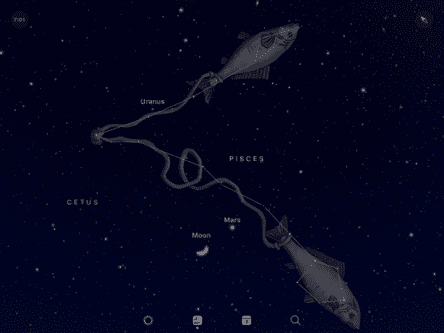Highlights of the January Sky 2019


• JAN 2 Earth is at perihelion, its closest distance to the Sun at 91.4 million miles.
Prolific science fiction author and polymath, Isaac Asimov was born this day in 1920. National Science Fiction Day marks the occasion of his birth.

• JAN 3 The Quadrantid Meteor Shower peaks tonight. It’s a generally reliable meteor shower that produces anywhere from 80 to 120 meteors per hour. The shower’s radiant is just below the handle of the Big Dipper. Unfortunately, this year the radiant point is too low to the horizon for North American viewers during the peak hours. The best views we will have will occur between 4:00 AM and 6:00 AM, with perhaps 20 to 25 meteors per hour. This will be a bad year for meteor showers here in North America as the best ones are going to be marred by bright moonlight or, as in this case, the radiant being too low upon the sky.
• JAN 5 Moon is at New Phase.

• JAN 8 Moon is at apogee, its greatest distance from the Earth this month at 252,850 miles.
Physicist Stephen Hawking was born this day in 1942.

• JAN 12 Look for the crescent moon just to the left of Mars in the early evening hours.
• JAN 14 Moon is at first quarter.

• JAN 15 During the hours before sunrise, look to the SE to see Venus and Jupiter forming a triangle with the star Antares, alpha star of Scorpius.

• JAN 17 Look for a waxing gibbous moon just above the star Aldebaran, the alpha star in Taurus the Bull, this evening.

• JAN 20 OBSERVING HIGHLIGHT! Total lunar eclipse. Pay no attention to news stories about the total lunar eclipse occurring on the 21st, which is technically correct, but only if you are using Universal Time. Tonight, the moon is at full phase and is also at perigee, its closest to Earth for the month at 222,042 miles. See our feature article for more info.

Edwin “Buzz” Aldrin was born this day in 1930, Aldrin and Neil Armstrong were the first two human beings to land and walk upon the moon.

• JAN 22 OBSERVING HIGHLIGHT! Conjunction of Venus and Jupiter. Currently, Venus is now descending sunward as it moves away from us in its orbit. Jupiter on the other hand, is now making its appearance for 2019 and is climbing higher and higher above the horizon with each passing morning. Like two ships passing in the night, these planets appear to be sliding alongside each other during the morning hours. Compare their relative positions to one another now as opposed to how they appeared just a few mornings ago on the 15th. The sky is always in motion and you can witness the orbital mechanics of these two planets from your own backyard.
• JAN 27 The moon is now at last quarter phase.

• JAN 30 Look to the SE before sunrise to see that the moon has now joined the Venus-Jupiter show.

• JAN 31 Venus and the moon get even more chummy in our morning sky as the moon is less than a degree from the planet.
